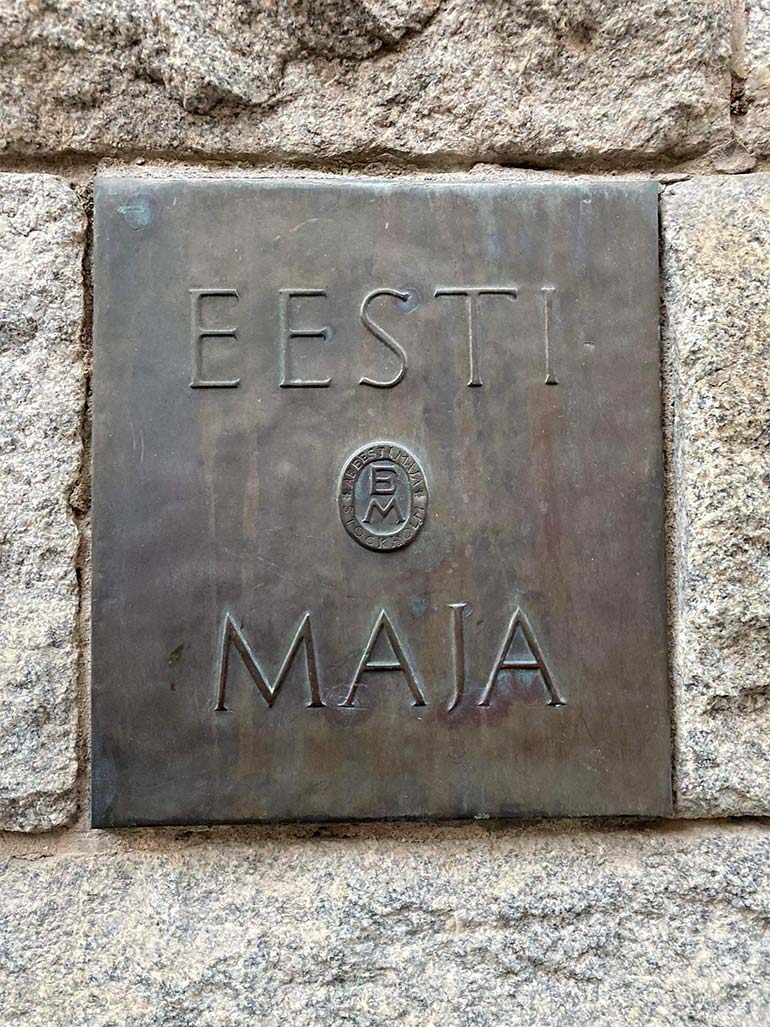Kadri Linnas: A virtual Estonian House
I recall a paragraph from one of the books in the My… series (books written by Estonians about various places of the world where they have lived or stayed for extended periods), where an Estonian woman describes her longing for forests when living in the Netherlands where there is little forest to be found. Her Dutch husband took her to a forest nearby to alleviate her longing and make his wife happy. However, when she arrived and saw an ordered forest surrounded by a parking space, she burst into tears. Her husband could not understand what was wrong. The Estonian woman struggled to make him understand that the little forest that was more like a park was not the wild Estonian forest she missed. I also remember my Estonian friend living in Finland mentioning that when Ita Ever passed away, she could not truly convey to her Finnish husband how deeply saddened she was.
There are moments when we need to be with people who understand the so-called subtext, the shared code after just one word. These people are actually all around us, we simply need to find them.
There are Estonian Houses all across the world. Most of them were established after the Second World War, when the Estonians who were forced to flee in 1944 had become prosperous enough by the 1950s to establish Estonian Houses in their countries of residence. These functioned as preservers of Estonian language and culture, as community centres for ‘our people.’ Now their children and grandchildren are active in Estonian Houses, alongside their compatriots who have arrived after Estonia restored its independence. Many of these houses are seeking new outlets to move with the times and attract the younger generation. Soon the novel Estonian centre KESKUS – the first of its kind - will be opened in Toronto. Fingers crossed that this will become a successful modern community centre and the teller of the unique Estonian story in Canada.

Estonian House in Stockholm
In addition to in-person contacts (which are irreplaceable!) it is possible to stay in touch on a much broader scale – virtually. On average, every fifth or sixth Estonian lives abroad. There is a Little Estonia that is defined geographically, and Great Estonia, which has no boundaries and figuratively entails all Estonians, people of Estonian origin, their families, and friends of Estonia across the world. Entrepreneur and founder of the Global Estonians podcast Rainer Sternfeld has aptly called this the global Estonian village. How do we connect this global Estonian village to reinforce a sense of unity with Estonia and Estonianness?
As a small nation and pioneers of the e-state, we have the luxury of creating more easily an Estonian network that connects everyone. It has great mutual potential for the Estonian state, companies and individuals. That is, if we want to take a more conscious attitude to this – every contribution counts!
One of these options for virtual networking is the online portal globalestonian.com. Let us call it a virtual Estonian House, inspired by physical Estonian Houses in the United States, Canada, Sweden, Australia and elsewhere. This portal helps you find other Estonians close to you or further away, and it has the newest information on how the Estonian state is supporting the Estonian diaspora.
It is a place where Estonian communities have ‘a room of their own’ according to their countries of residence. You can find social media groups for Estonians, Estonian schools, camps for children, inspiring stories and news. You can also subscribe to a monthly newsletter there.
A few years ago, on Facebook, I finally tracked down a relative of my grandmother who was lost in the war – he was an old man living in Brazil and surprisingly, he considered himself an Estonian. His father had arrived in Brazil in the 1920s as a young man. My relative did not speak any Estonian, nor had he ever visited Estonia but he had his father’s memories and he had given all his children names that had a connection with Estonia. He told me that when I contacted him from Estonia, the land of his father, it was the happiest day of his life before he died.
The enduring of the Estonian state and culture depends on the preservation of the Estonian language, and vice versa, which means that maintaining Estonian and using it (consciously) remains our number one task. However, this does not mean that it should become an impediment. This is why the shared information space of the virtual Estonian House is as multilingual as necessary at a given moment. Here, artificial intelligence could come to our aid (which has been likened to the Estonian mythological creature kratt in Estonia), and in the future, its possibilities could be harnessed even more efficiently to preserve Estonian cultural identity.

Kadri Linnas
Adviser at the Estonian Diaspora Department in the Ministry of Foreign Affairs







